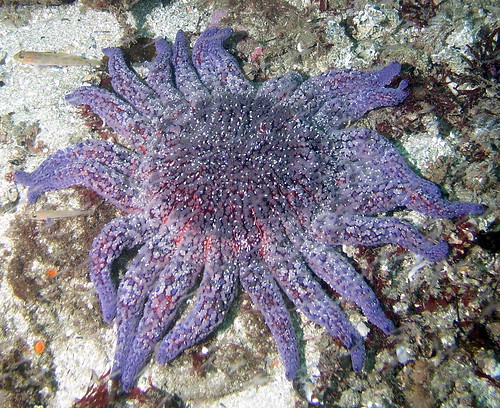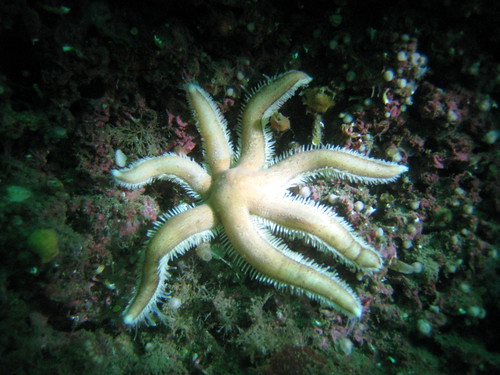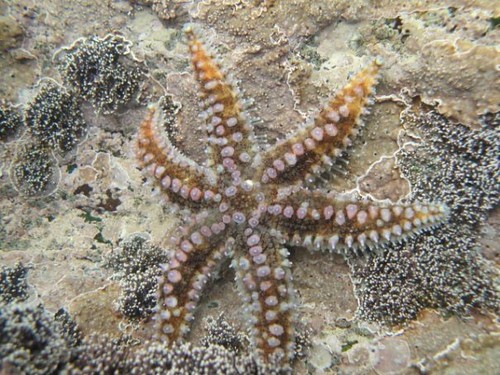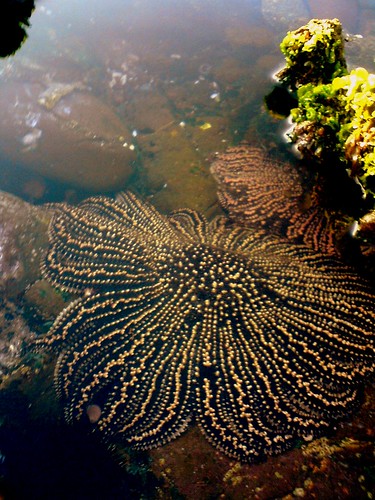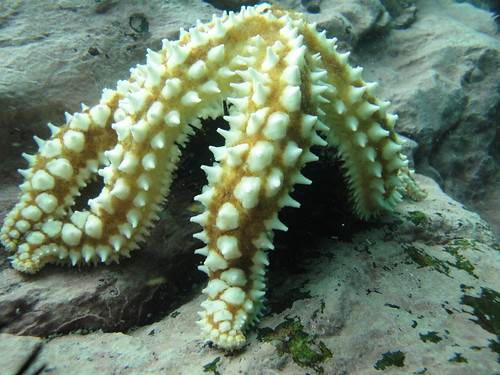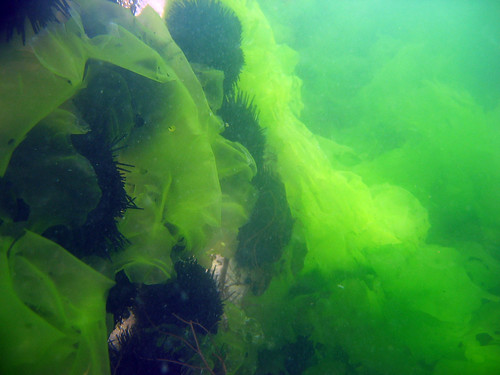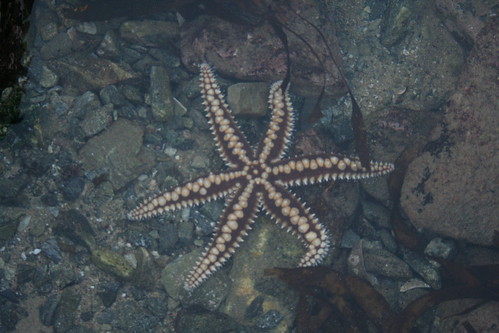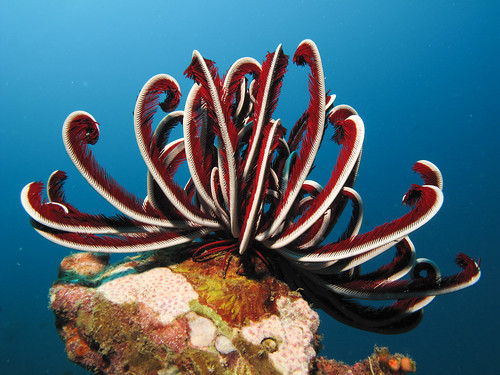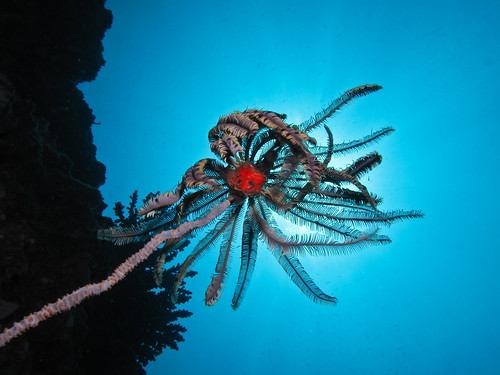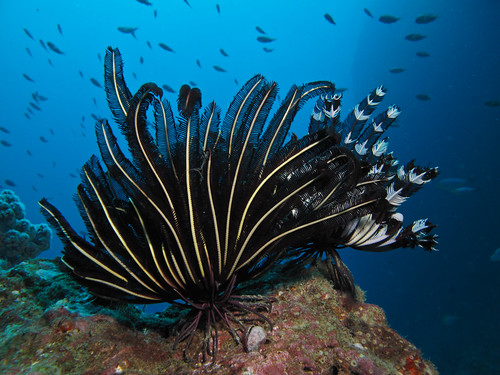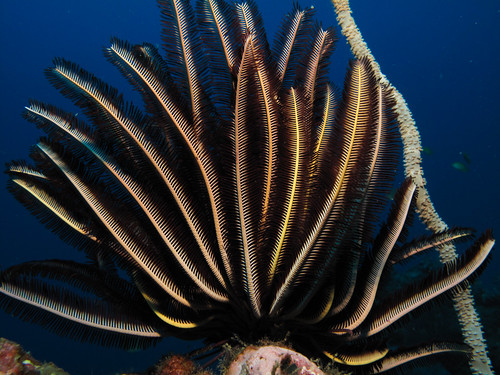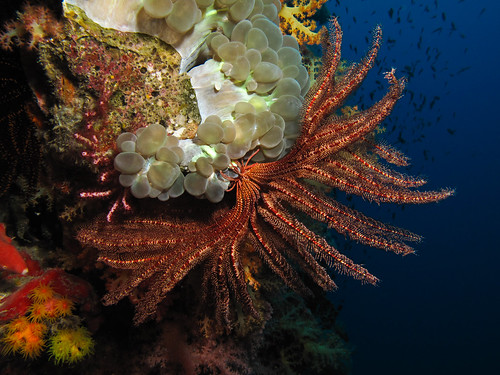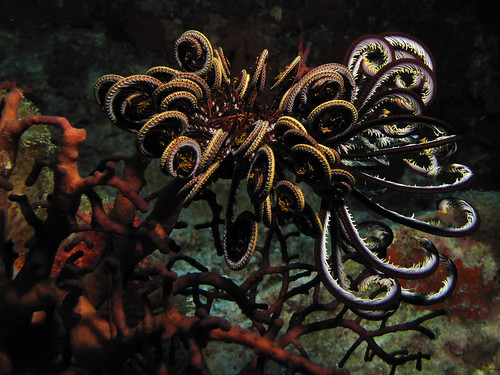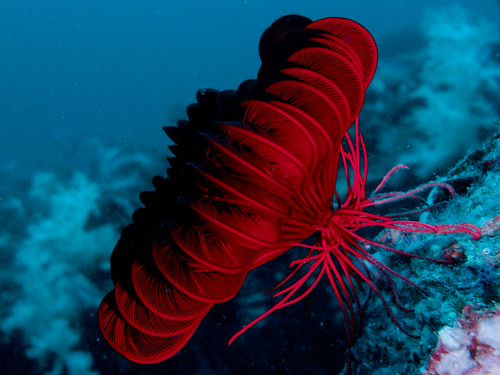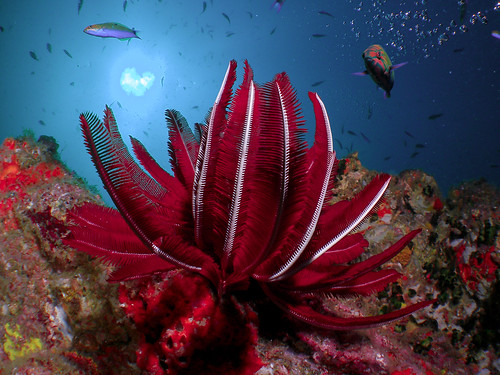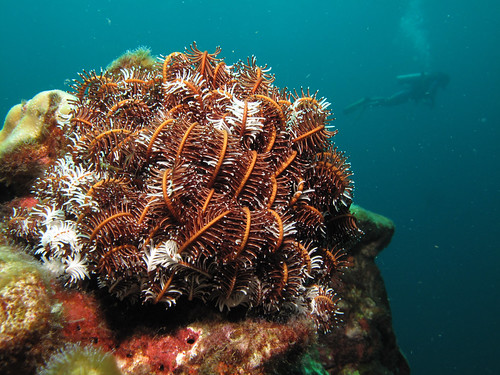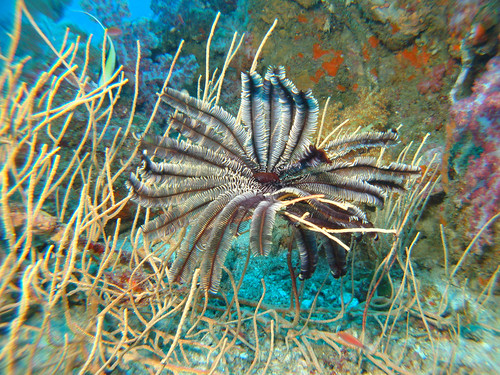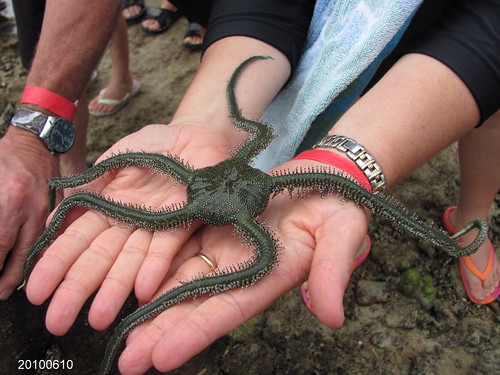(this image by Arthur Anker!)
The tropical East Pacific region, including Baja California/Mexico, Panama, to Ecuador and the Galapagos has some of the most unique, diverse and GORGEOUS starfish species anywhere in the world.This area is also interesting for studies of biogeography and evolution as the "middle ground" between the highly diverse Indo-Pacific region and the tropical Atlantic.
One cool resource for this area is the Gulf of California Invertebrates Database run by the Center for Sonoran Desert Studies at the Arizona-Sonora Desert Museum. Go check it out!
Here's a bunch of the more prominent shallow water starfish you're inclined to encounter in this region...
Pentaceraster cumingi (aka Oreaster occidentalis). Oreasteridae. Photo by bswift. From Bahía de los Ángeles, Sea of Cortez. This one is interesting-have not seen the yellow highlights. It almost looks like one of the Indo-Pacific species...
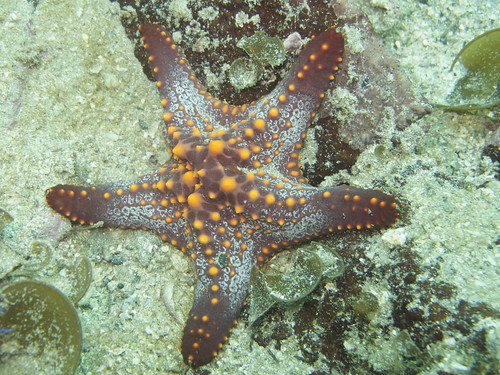
Image by cam17 from the Galapagos.

and this "frosted" variant. Image by cam17 from the Galapagos

This next pic is something special! You can probably not see this anywhere but in the Panama area (where there are both Atlantic and Pacific coasts)!!
There are VERY few places in the world where you would you be able to see them BOTH alive in the same place at the same time. I would be curious to know where this was shot...
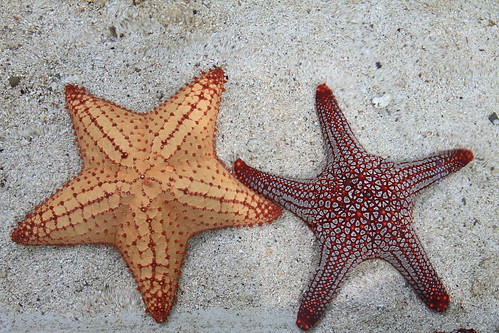
Nidorellia armata aka the "chocolate chip star". Oreasteridae. Photo by cam 17. From the Galapagos
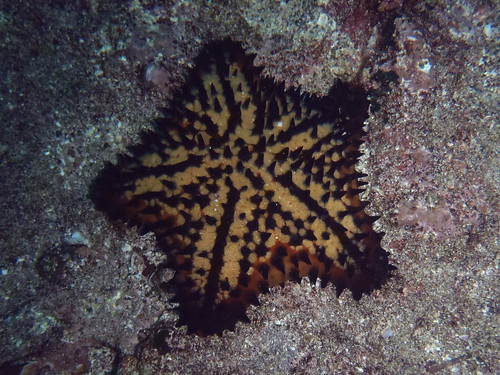
Another great image by billamp. Pic from off San Carlos Mexico.
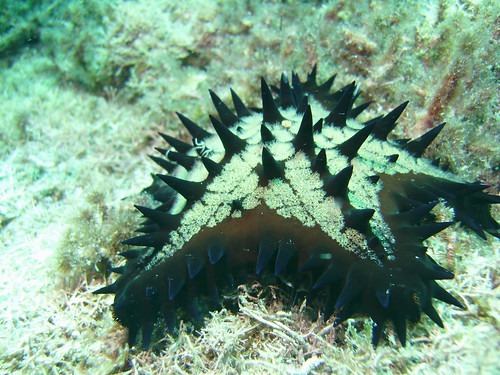
Close up on Nidorellia. This terrific image by Scott Trageser (NatureStills) shows tiny ophiuroids (possibly Ophiactis?) living on the spines! Not sure, but these might be something new?
Pharia pyramidata. Ophidiasteridae. Image by Hawkfish from Cabo Pulmo, Baja California, Mexico.
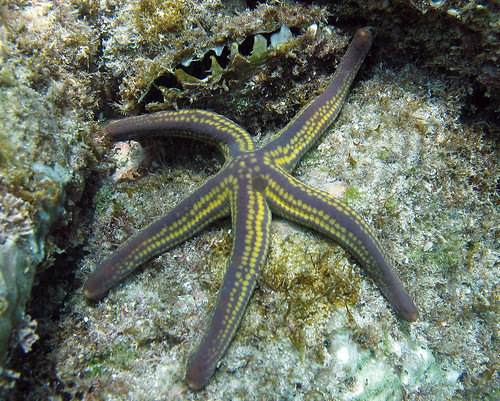
Phataria unifascialis. Ophidiasteridae. Image by Hawkfish from Cabo Pulmo, Baja California, Mexico.

here's a red variant from Panama by colleague Arthur Anker!
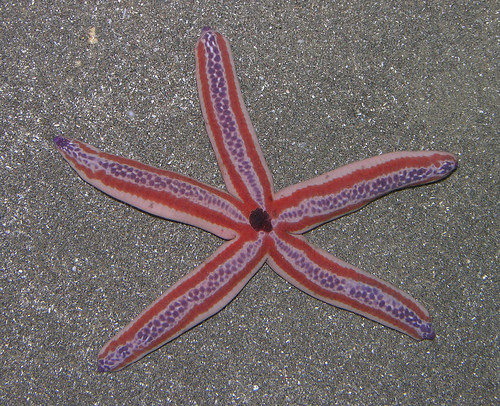
Mithrodia bradleyi. Mithrodiidae. Image by Hawkfish from Cabo Pulmo, Baja California, Mexico.
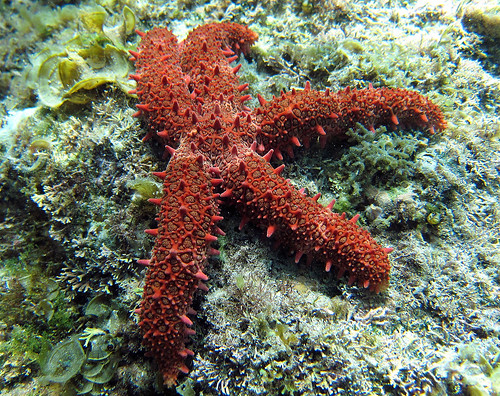
Heliaster kubiniji. Heliasteridae. Image by Sou so-Fine from La Paz, Baja California, Mexico.
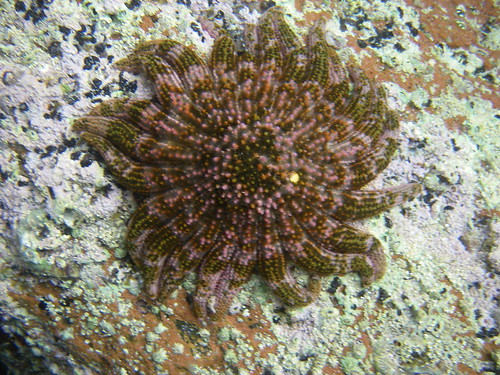
Acanthaster planci. Acanthasteridae. The Crown of Thorns starfish! Image by Sou So Fine. Image from La Paz, Baja California, Mexico.
At one time, there was one species of crown-of-thorns starfish which occurred from Baja California to Southern Japan/Hawaii all the way to the east coast of Africa! Nowadays, genetics tells us there are likely multiple cryptic species that morphology may or may not be able to distinguish..
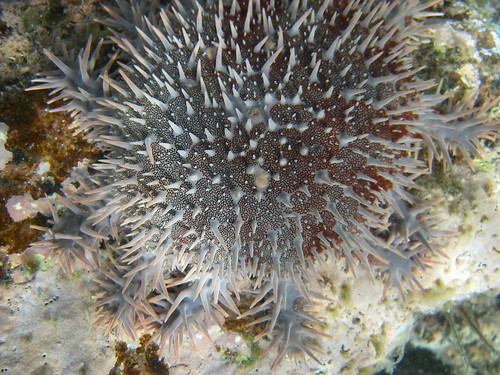
hmm..an interesting red Astropecten sp. Astropectinidae from Ecuador. Image by altsaint.
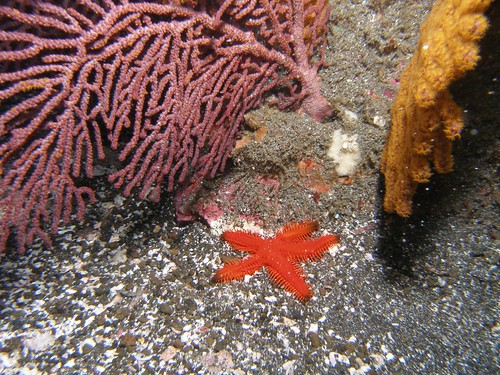
and another non-red Astropecten.. image by Ed Robinson
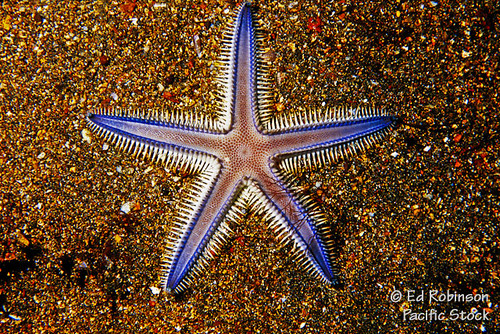
Here is Amphiaster insignis one of the few members of the family Asterodiscidiae (image from Simon Coppard's "Echinoderms of Panama" Lifedesk. In life these are a brilliant orange..
and finally-saving the best for last From the Galapagos is the HUGE sand star Luidia superba (very stunningly presented by Dr. Jen H. for scale)

Nidorellia armata aka the "chocolate chip star". Oreasteridae. Photo by cam 17. From the Galapagos

Another great image by billamp. Pic from off San Carlos Mexico.

Close up on Nidorellia. This terrific image by Scott Trageser (NatureStills) shows tiny ophiuroids (possibly Ophiactis?) living on the spines! Not sure, but these might be something new?
Pharia pyramidata. Ophidiasteridae. Image by Hawkfish from Cabo Pulmo, Baja California, Mexico.

Phataria unifascialis. Ophidiasteridae. Image by Hawkfish from Cabo Pulmo, Baja California, Mexico.

here's a red variant from Panama by colleague Arthur Anker!

Mithrodia bradleyi. Mithrodiidae. Image by Hawkfish from Cabo Pulmo, Baja California, Mexico.

Heliaster kubiniji. Heliasteridae. Image by Sou so-Fine from La Paz, Baja California, Mexico.

Acanthaster planci. Acanthasteridae. The Crown of Thorns starfish! Image by Sou So Fine. Image from La Paz, Baja California, Mexico.
At one time, there was one species of crown-of-thorns starfish which occurred from Baja California to Southern Japan/Hawaii all the way to the east coast of Africa! Nowadays, genetics tells us there are likely multiple cryptic species that morphology may or may not be able to distinguish..

hmm..an interesting red Astropecten sp. Astropectinidae from Ecuador. Image by altsaint.

and another non-red Astropecten.. image by Ed Robinson

Here is Amphiaster insignis one of the few members of the family Asterodiscidiae (image from Simon Coppard's "Echinoderms of Panama" Lifedesk. In life these are a brilliant orange..
and finally-saving the best for last From the Galapagos is the HUGE sand star Luidia superba (very stunningly presented by Dr. Jen H. for scale)




